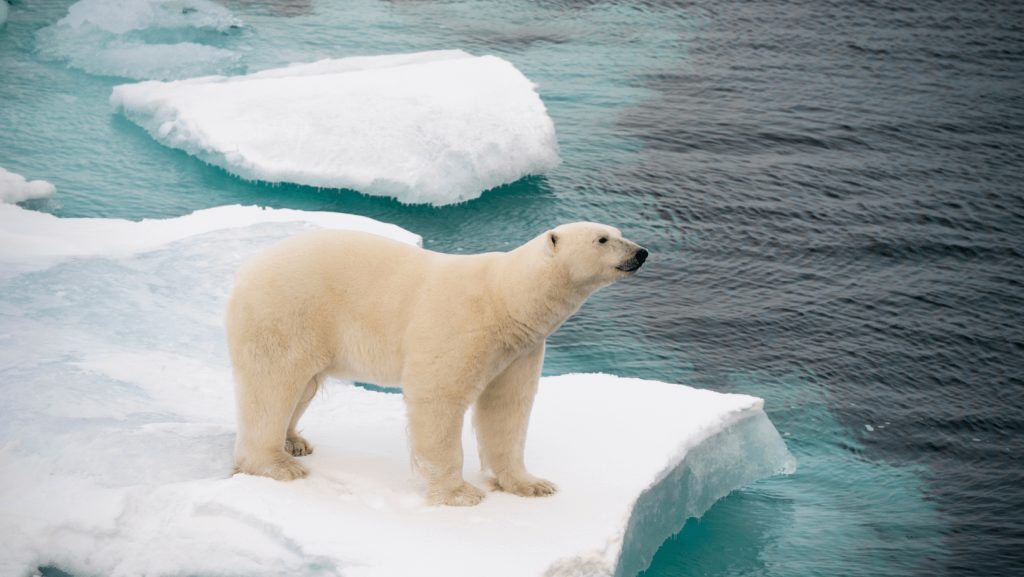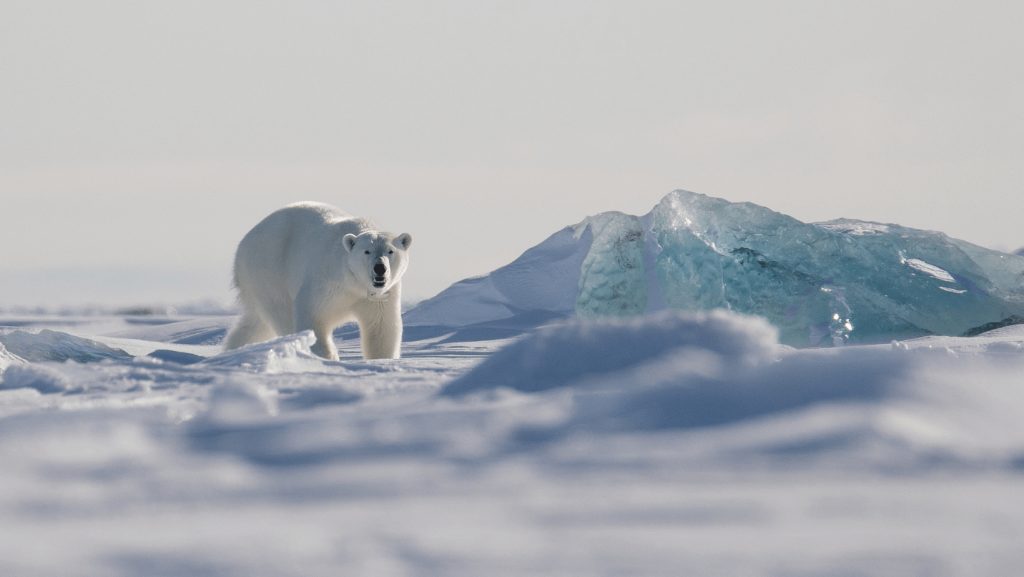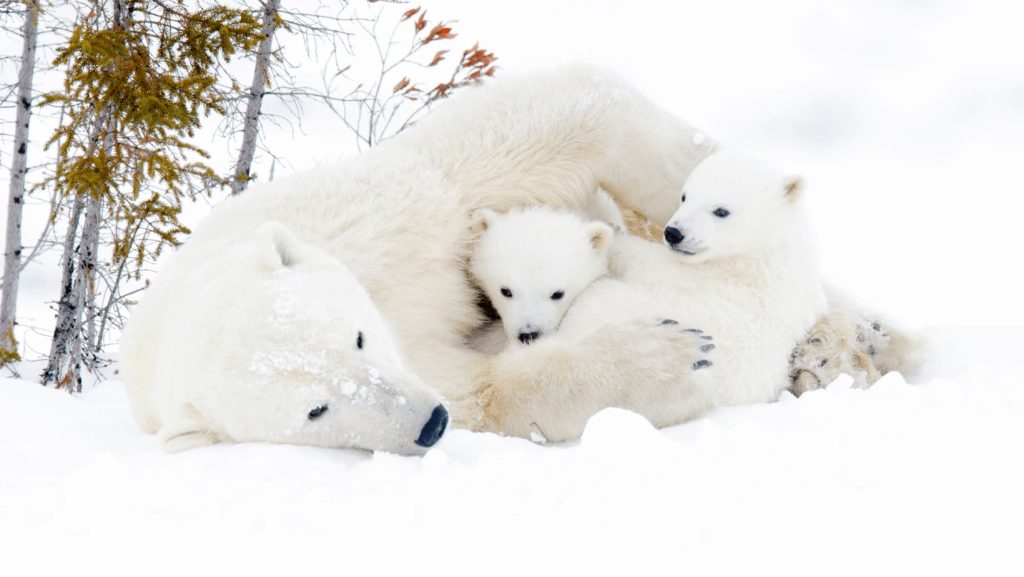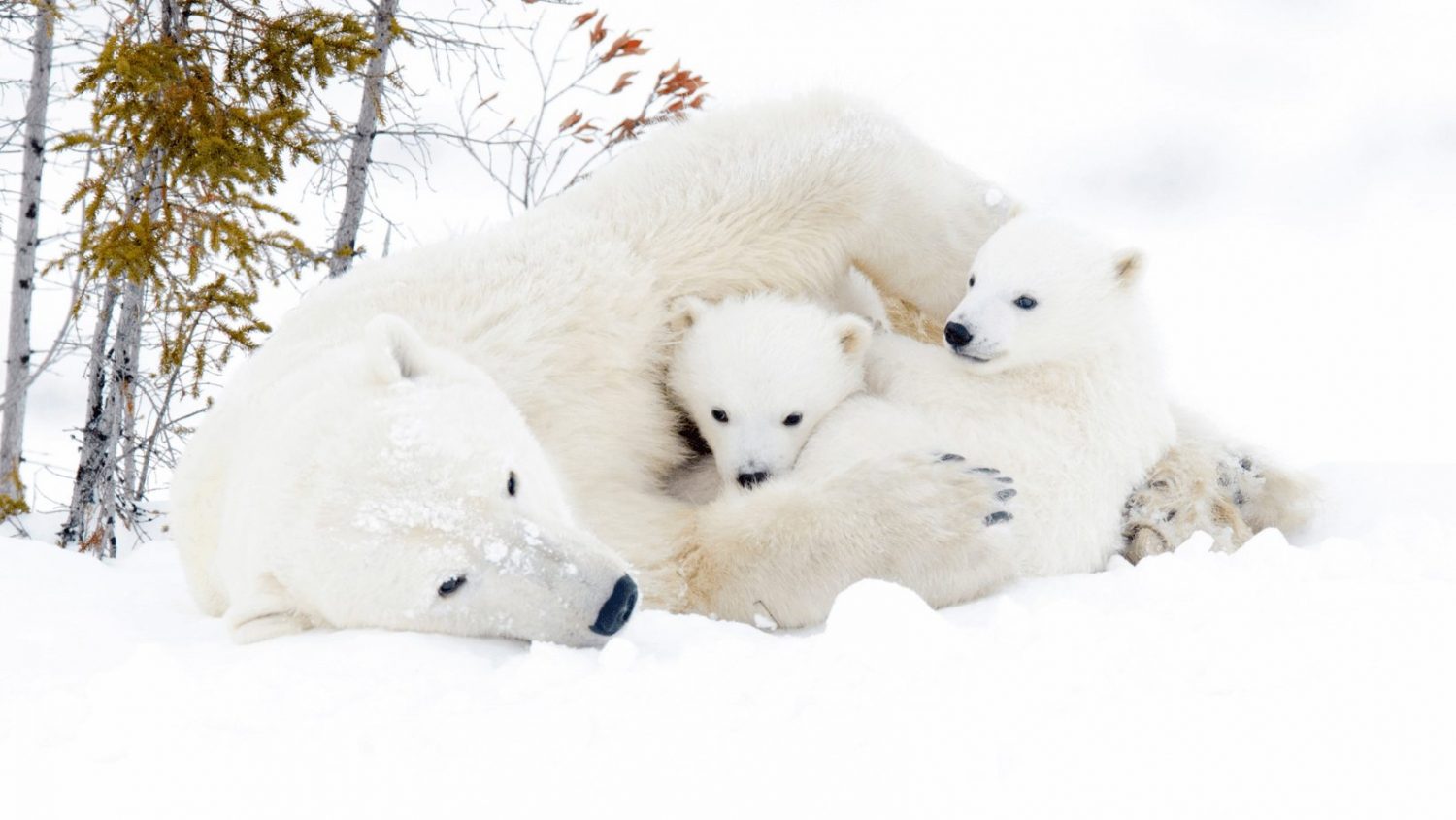
Polar Bear Or Sea Bear?
Polar bears can be found on the ice-covered waters of the Arctic region. The animal’s Latin name, Ursus maritimus, translates to “sea bear,” which is an apt name for the species. Because polar bears spend most of their lives on the sea ice of the Arctic Ocean, they are the only bear species classified as marine mammals.
Polar bears are skilled swimmers and can swim at a speed of six miles per hour for sustained amounts of time. They swim using only their front limbs and holding their hind legs flat like a rudder, an aquatic adaptation found in no other four-legged mammal.
They’ve been known to travel long distances over vast desolate expanses, generally on drifting oceanic ice floes. However, it’s not uncommon for them to swim for extended periods of time, sometimes days on end, while traveling from one sheet of ice to another. Given their reliance on ice for hunting, traveling, resting, and mating, climate change poses a serious threat to these animals. In fact, polar bears were listed as a threatened species in the US under the Endangered Species Act in May 2008.

Dangerous Hunters
Except for one subspecies of grizzly bear, the polar bear is the largest and most powerful carnivore on land. It has no natural predators and doesn’t display fear of humans, making it an extremely dangerous animal. They are the most carnivorous members of the bear family and feed mainly on a diet of ringed seals because they need large amounts of fat to survive.
The most common methods they use for hunting are stalking seals resting on the ice, ambushing them near breathing holes, and digging young seals from snow shelters where they are born. Much like other predators, a surprising number of polar bear hunts are unsuccessful. It’s estimated that they will catch only one to two out of every ten seals they hunt.
While the polar bear prefers to hunt ringed seals, they aren’t picky if they’re in a pinch. They will also hunt bearded seals, other pinnipeds, and even the occasional beluga whale. In addition to actively hunting, they’re also opportunistic eaters and will consume dead fish, carcasses of stranded whales, and garbage near human settlements.

Polar Bear Profile
Despite their deceptive appearance, polar bears are actually black, not white. Their fur is translucent, and it only appears white because it reflects visible light. Beneath the thick layer of fur, their skin is black. Diving even deeper into the bear’s makeup, beneath their skin is a layer of fat 4 inches thick to help insulate them from the freezing conditions of their habitat.
While they weigh roughly 2 pounds at birth, male polar bears can grow to weigh up to 1,600 pounds. Cubs are vulnerable to starvation as well as being killed by adult males, so female polar bears are extremely defensive of their young when adult males are present. Adult polar bears have no natural predators, however walruses and wolves can kill them if engaged in a fight.
Their average lifespan in the wild is 25 to 30 years, however, they can live up to 35 years in captivity. As of 2020, an estimated 22,000 to 31,000 polar bears were living in the wild. Scientists have divided them into 19 individual populations which are found across a total of five countries – the U.S. (Alaska), Canada, Russia, Greenland, and Norway (Svalbard).
Pop Quiz
James Dean (he died in a car accident later the same day)

